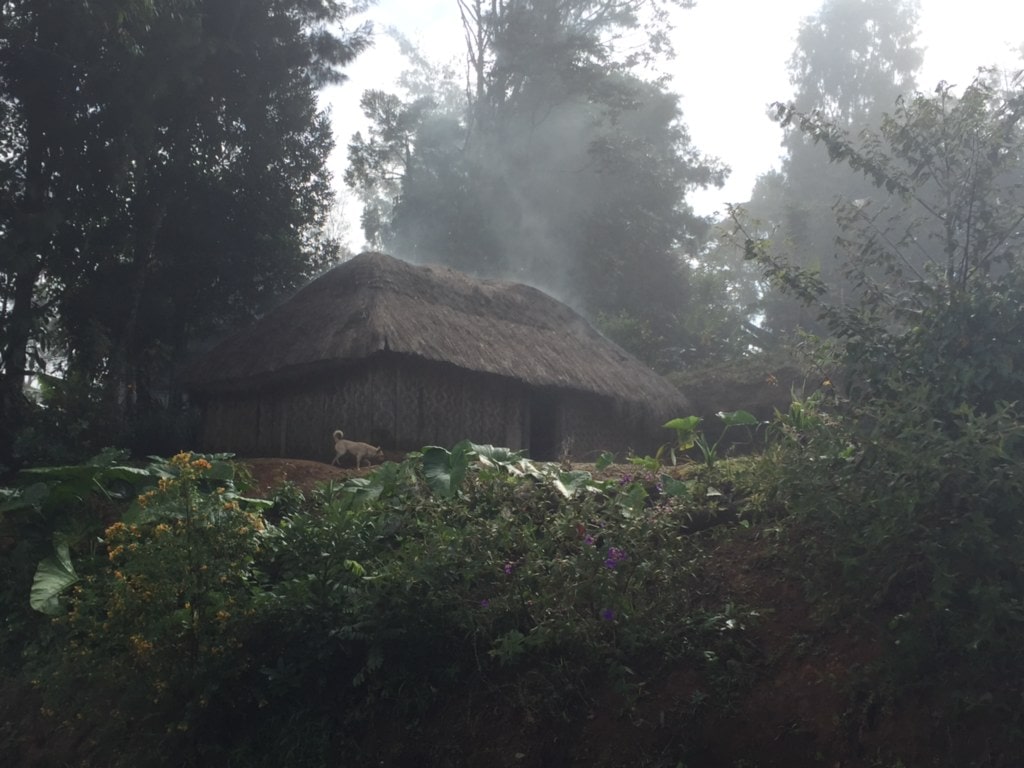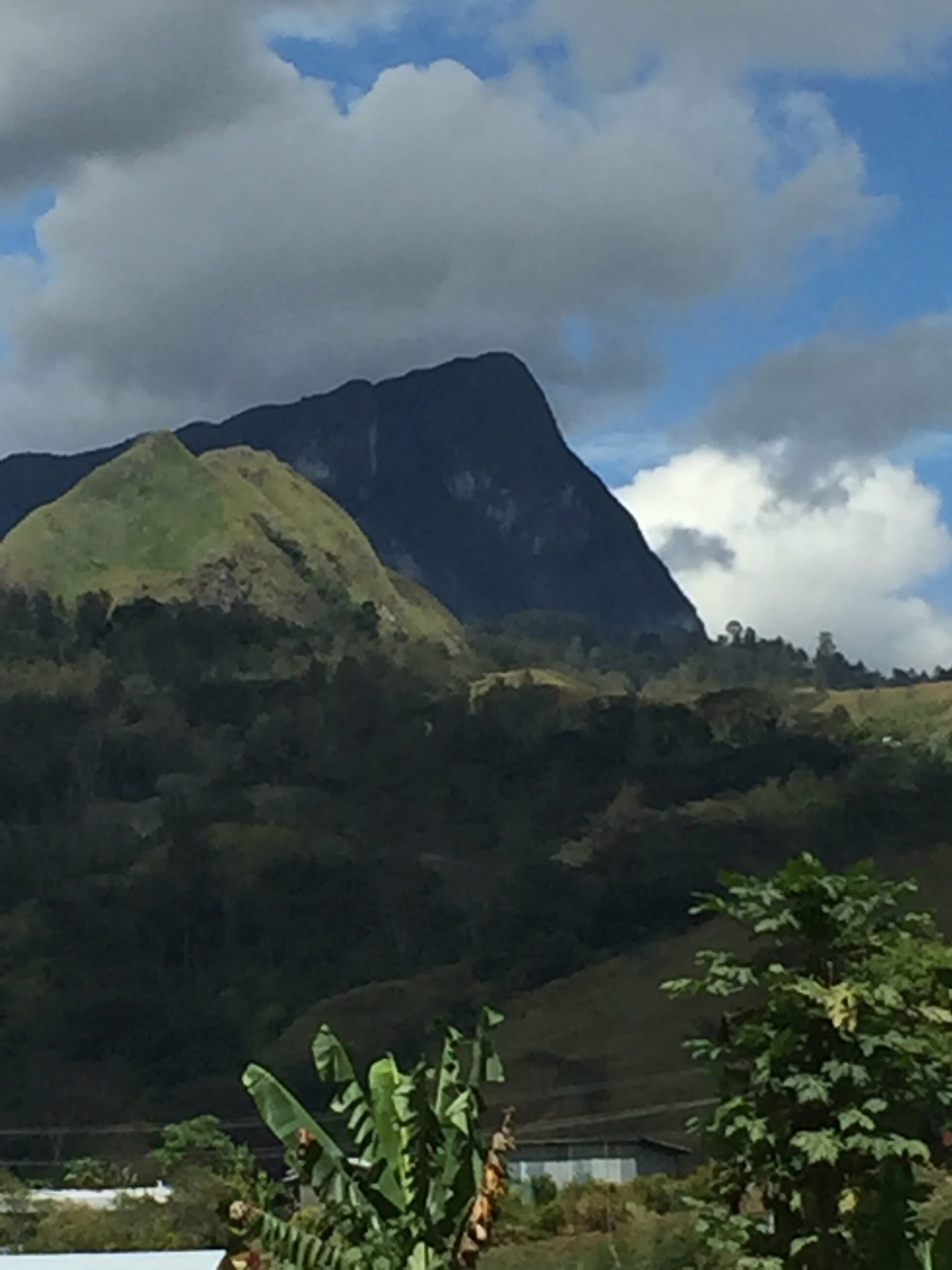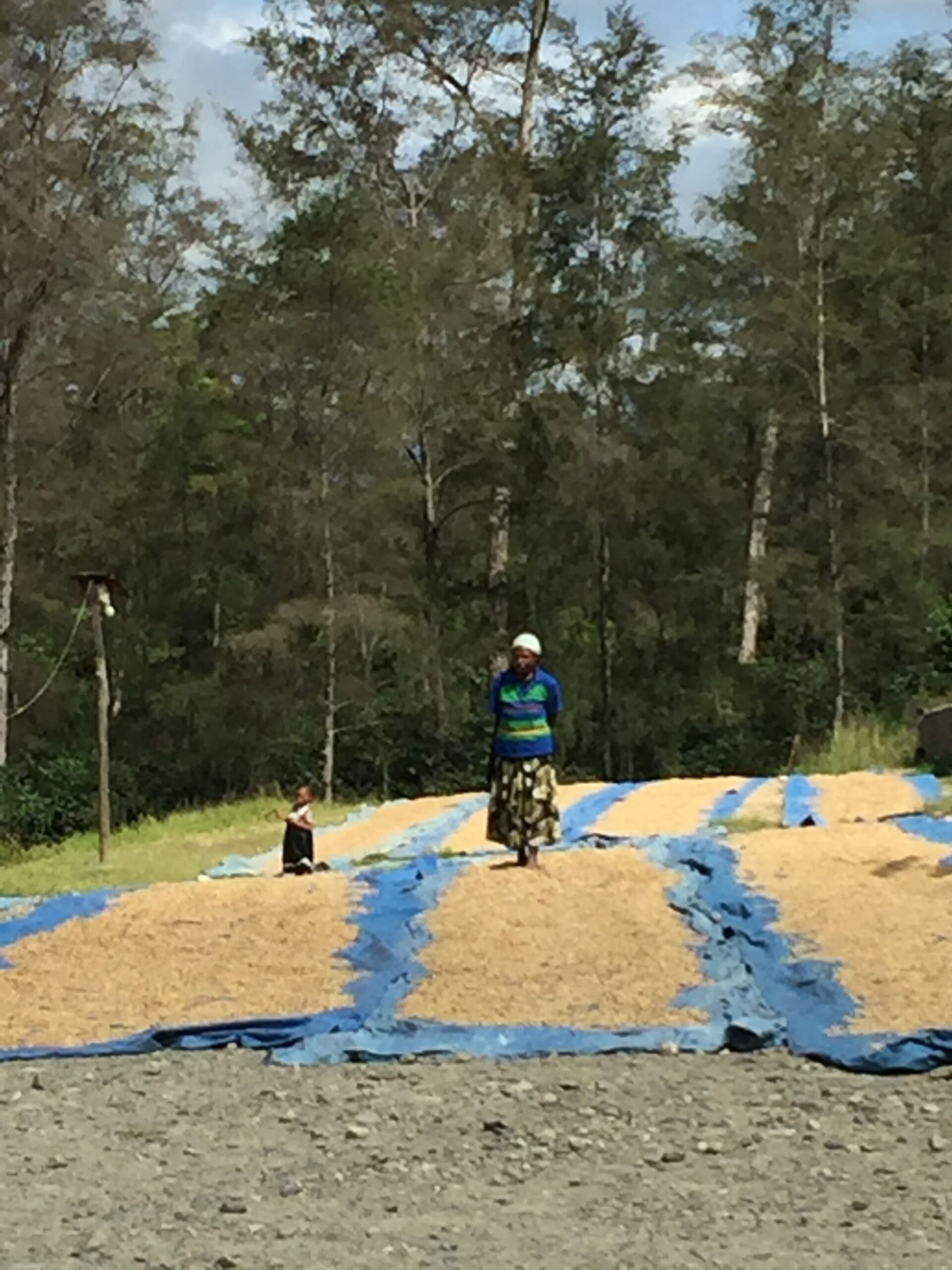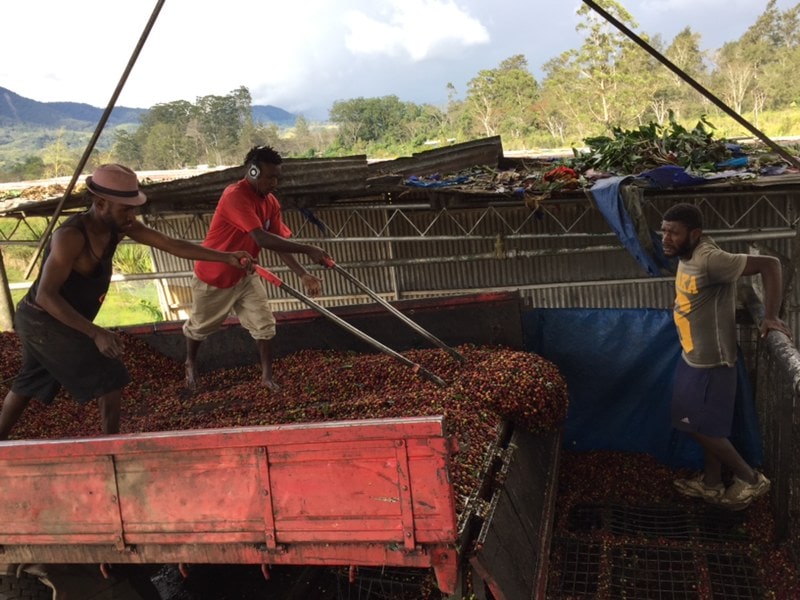The story of coffee in Papua New Guinea is unlike any other origin. Roads are often nonexistent, communities are incredibly remote, and most coffee is grown casually in gardens alongside a family’s food supply. In fact, 99 percent of coffee is grown by individuals with an average farm size of .83 hectares and an average production of 10 bags per year.
Without access to mills, these producers pulp, ferment, wash and dry their own coffee, selling small volumes of parchment. Additionally, due to the extreme lack of access, coffee often makes it to exporters through roadside collections or aggregator pickups. This means the large lots of coffee we see exported are in fact the accumulation of many, untraceable micro-volumes which have been combined for processing.
In Papua New Guinea, large volume lots are designated by grade. In the case of Papua New Guinea Grade B, we see a uniform, clean cup with well medium to high acidity and distinct fragrance and aroma.
Cupping notes: Caramel, black currant, leather.




